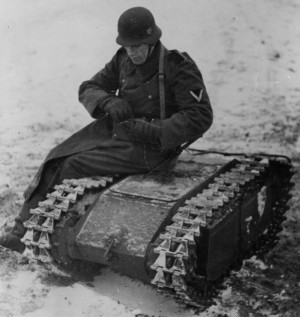World War II
World War II (WWII or WW2), also known as the Second World War, was a global war that lasted from 1939 to 1945.
World War II Fighters (Documentary)
World War II Fighters: Supermarine Spitfire
The Supermarine Spitfire is a British single-seat fighter aircraft that was used by the Royal Air Force and many other Allied countries throughout the Second World War. The Spitfire continued to be used as a front line fighter and in secondary roles into the 1950s. It was produced in greater numbers than any other British aircraft and was the only British fighter in continuous production throughout the war. [Wikipedia]
World War II Fighters: Dog-Fighting Tactics
World War II Fighters: Messerschmitt Bf 109
The Messerschmitt Bf 109, often called Me 109, was a German World War II fighter aircraft designed by Willy Messerschmitt and Robert Lusser during the early to mid-1930s. It was one of the first truly modern fighters of the era, including such features as all-metal monocoque construction, a closed canopy, a retractable landing gear, and was powered by a liquid-cooled, inverted-V12 aero engine. [Wikipedia]
Kliment Voroshilov Tank
The Kliment Voroshilov (KV) tanks were a series of Soviet Red Army heavy tanks, named after the Soviet defense commissar and politician Kliment Voroshilov. The KV series were known for their extremely heavy armour protection during the early part of World War II, especially during the first year of the invasion of the Soviet Union. More
T-34 Tank
Elefant Tank
Elefant (German for "elephant") was a Schwerer Panzerjäger ("heavy tank destroyer") of the German Wehrmacht used in small numbers in World War II. It was built in 1943 under the name Ferdinand, after its designer Ferdinand Porsche. In 1944, after modification of the existing vehicles, they were renamed Elefant. The official German designation was Panzerjäger Tiger (P) and the ordnance inventory designation was Sd. Kfz. 184. [Wikipedia]
Restoring An Elefant Tank
World War II Battles (Documentary)
Wehrmacht
The Wehrmacht (Defence Force)—from German: wehren, to defend and Macht, power, force, cognate to English might) was the unified armed forces of Germany from 1935 to 1945. It consisted of the Heer (army), the Kriegsmarine (navy) and the Luftwaffe (air force).
The term Wehrmacht generically describes a nation's Armed Forces, thus, Britische Wehrmacht denotes “British Armed Forces.” The term Wehrmacht is in Article 47 of the 1919 Weimar Constitution, establishing that: Der Reichspräsident hat den Oberbefehl über die gesamte Wehrmacht des Reiches (“The Reich's President holds supreme command of all armed forces of the Reich”). From 1919, Germany’s national defence force was known as the Reichswehr, which name was dropped in favor of Wehrmacht on 16 March 1935. The name Wehrmacht even in Germany is generally considered a proper noun of the 1935-45 armed forces, being replaced by Streitkräfte in its original meaning; however, this was not so even some decades after 1945. In English writing Wehrmacht is often used to refer specifically to the land forces (army); the correct German for this is Heer. [Wikipedia]
Goliath, Wehrmacht Tank Destroyer
Goliath Demolition Tank (English)
World War II Footage: Goliath (German with English Subtitles)
Goliath Tracked Mine
The Goliath tracked mine - complete German name: Leichter Ladungsträger Goliath (Sd.Kfz. 302/303a/303b) - was a remote controlled German-engineered demolition vehicle, also known as the beetle tank to the Allies.
Employed by the Wehrmacht during World War II, this caterpillar-tracked vehicle was approximately 4 feet (1.2 m) long, 2 feet (0.61 m) wide, and 1 foot (0.30 m) tall. It carried 75–100 kilograms (170–220 lb) of high explosives and was intended to be used for multiple purposes, such as destroying tanks, disrupting dense infantry formations, and demolition of buildings and bridges. [Wikipedia]






